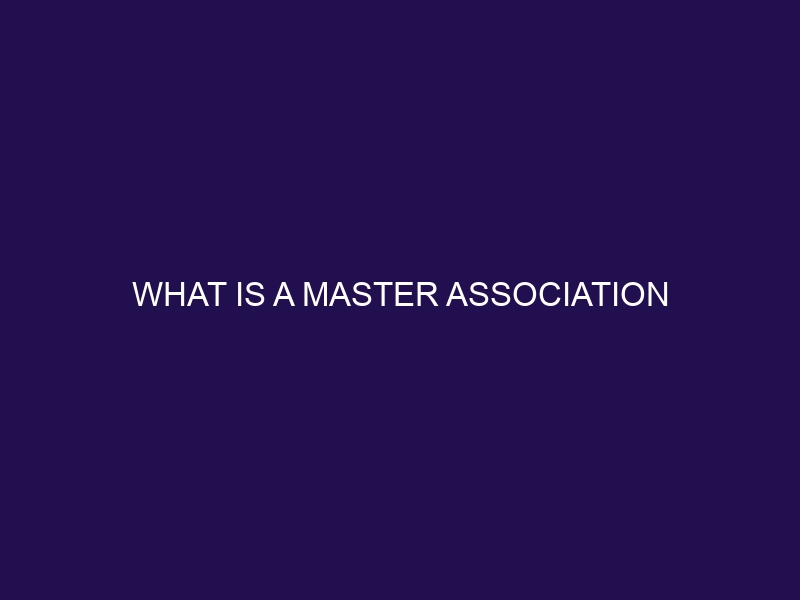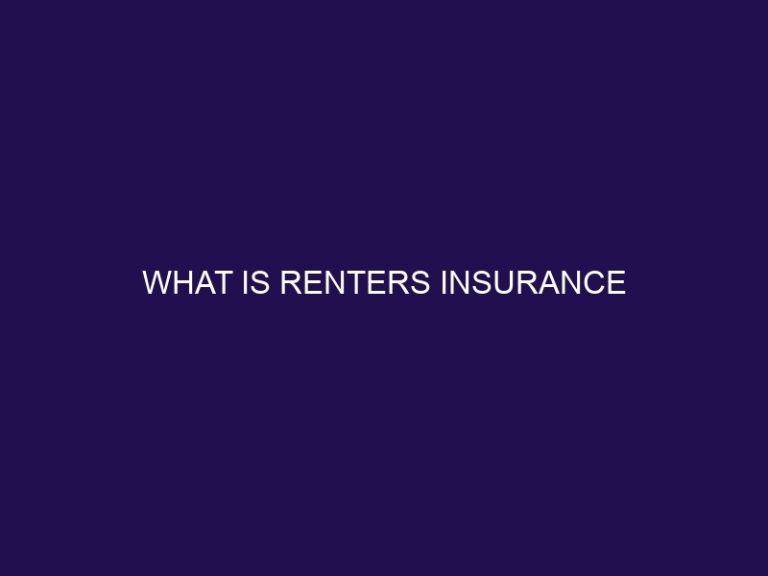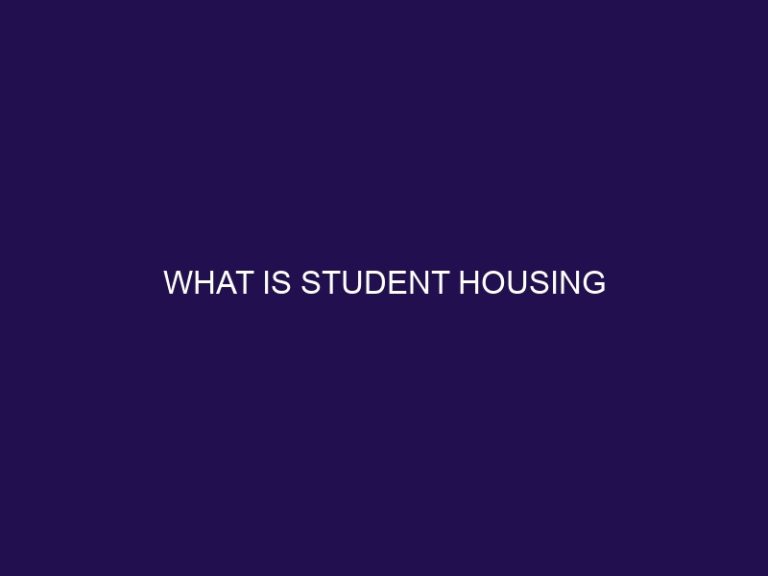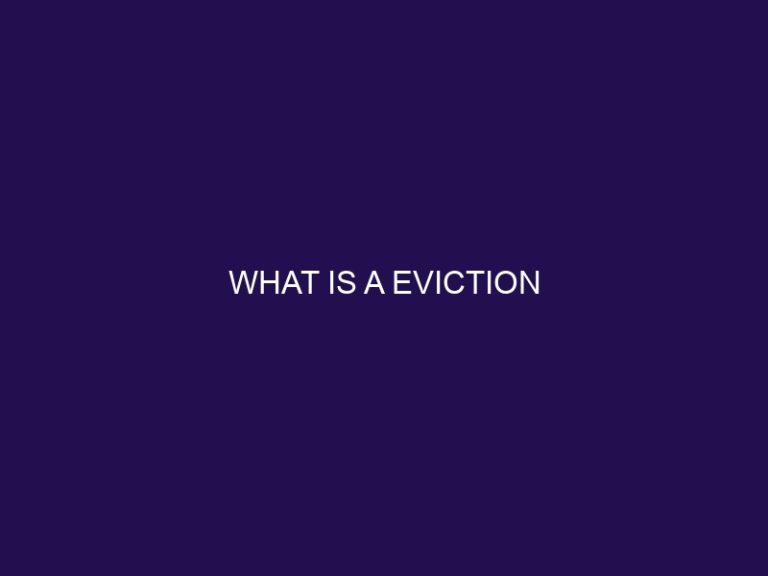What is a Master Association
A master association is an organization that oversees and manages a group of sub-associations within a larger community or development. It plays a crucial role in maintaining the overall community’s standards, managing shared amenities and facilities, and enforcing rules and regulations. Understanding the key features, roles, and responsibilities, as well as the benefits and challenges of a master association, is essential for homeowners and residents within these communities.
The key features of a master association can be outlined as follows:
- Definition and Purpose: A master association is responsible for ensuring the overall well-being and functionality of a larger community or development composed of sub-associations.
- Governance and Membership: It establishes governance structures and typically has a board of directors or trustees representing the common interests of all sub-associations. Membership is often mandatory for all property owners within the community.
- Financial Responsibilities: The master association collects monthly fees or assessments from property owners to fund various services, maintenance, and repairs within the community.
The roles and responsibilities of a master association can include:
- Property Maintenance and Upkeep: Ensuring the maintenance and appearance of common areas, landscaping, and infrastructure within the community.
- Amenities and Facilities Management: Managing and maintaining shared amenities such as parks, swimming pools, fitness centers, and clubhouse facilities.
- Enforcing Rules and Regulations: Implementing and enforcing community-wide rules and restrictions to maintain community standards and preserve property values.
Benefits of a master association include:
- Consistent Community Standards: The master association enforces rules and regulations, ensuring a consistent and harmonious living environment for all residents.
- Enhanced Property Values: By maintaining community aesthetics and amenities, property values within the master association often appreciate more effectively over time.
- Shared Amenities and Services: Residents can benefit from shared amenities and services provided by the master association, such as landscaped parks or recreational facilities.
However, master associations also come with certain challenges, including:
- Increased Monthly Fees: The additional cost of the master association fees can be a financial burden for some homeowners.
- Potential Lack of Autonomy: Homeowners may have limited decision-making power over community matters, as the master association’s governing body holds significant authority.
- Conflicts with Sub-Associations: Conflicts or disagreements can arise between the master association and sub-associations regarding governance, financial matters, or the allocation of resources.
Understanding the role and function of a master association is essential for homeowners considering residing within such communities, as it directly affects their rights, responsibilities, and overall quality of life.
Key Features of a Master Association
Discover the fascinating world of Master Associations and delve into their key features. From understanding the definition and purpose to exploring the governance and membership, as well as the financial responsibilities involved, this section unveils the essential aspects of Master Associations. Get ready to dive into a realm where communal living meets effective management, shaping neighborhoods and enhancing the quality of community living.
Definition and Purpose
A master association is an overarching governing body that manages multiple sub-associations within a community or development. Its primary purpose is to ensure consistency, unity, and order within the community. The definition of a master association can be summarized as an entity responsible for overseeing and coordinating the operations of multiple sub-associations. It acts as the ultimate authority, establishing guidelines, regulations, and policies for the entire community. Furthermore, the purpose of a master association is to maintain the overall integrity, quality, and value of the community. By enforcing rules, maintaining common areas, managing amenities, and addressing community-wide concerns, it aims to create a harmonious and cohesive environment. The master association also plays a vital role in ensuring consistency by implementing community standards. This helps to maintain the aesthetic appeal and quality of the community. It ensures that all properties and common areas are well-maintained, improving property values for homeowners and providing a desirable living environment. In summary, a master association serves as a governing body, establishing guidelines and maintaining the overall quality and unity of a community.
Governance and Membership
- Governance: A master association is responsible for establishing and enforcing rules and regulations within a community, ensuring compliance and maintaining consistency.
- Membership: Property owners within the community automatically become members of the master association and have the right to participate in decision-making processes.
- Board of Directors: The master association is governed by a board of directors, elected by the members, who are responsible for making important decisions and managing the affairs of the association.
- Meetings and Voting: Regular meetings are held where members can voice their opinions and vote on important matters affecting the community.
- Membership Dues: Members are required to pay regular dues to the master association, which are used to fund necessary expenses such as maintenance, repairs, and community amenities.
Financial Responsibilities
A master association bears several financial responsibilities to ensure the smooth functioning of the community. These financial responsibilities include:
Fact: A study found that communities with well-managed master associations tend to experience higher property values and increased resident satisfaction.
Roles and Responsibilities of a Master Association
Master associations play a crucial role in the smooth functioning of communities. In this section, we’ll dive into the various responsibilities shouldered by a master association. From overseeing property maintenance and managing amenities to diligently enforcing rules and regulations, we’ll explore the multifaceted tasks they handle. Get ready to uncover the behind-the-scenes work that keeps our communities thriving and harmonious.
Property Maintenance and Upkeep
Property maintenance and upkeep are essential responsibilities of a master association. It is crucial to consider several key aspects in order to fulfill these duties:
- Regular maintenance: The master association holds the responsibility for the upkeep of common areas, such as parks, roads, and swimming pools.
- Landscaping: It is vital to ensure that the landscaping is well-maintained, which includes tasks like mowing lawns, trimming trees, and planting flowers.
- Repairs: Addressing any repairs required in common areas is of utmost importance. This involves fixing broken streetlights or repairing playground equipment.
- Cleaning: Keeping common areas clean and organized is another significant aspect. This includes regular garbage collection and cleaning of shared facilities.
- Budgeting: Proper allocation of funds for property maintenance is necessary. Ensuring that necessary repairs and upkeep are adequately funded should also be a priority.
By giving priority to property maintenance and upkeep, a master association can effectively maintain the value and appeal of the community for its residents.
Amenities and Facilities Management
Amenities and facilities management are crucial responsibilities of a master association, ensuring the smooth functioning and enjoyment of the community.
- Maintenance: The master association diligently maintains common areas, such as parks, playgrounds, and swimming pools, as part of their amenities and facilities management duties.
- Repairs: The association takes care of facilities like clubhouses, fitness centers, and sports courts to ensure they are in optimal condition, which falls under their amenities and facilities management responsibilities.
- Upgrades and renovations: In line with the needs and preferences of the community, the association assesses and implements improvements to amenities, demonstrating their commitment to amenities and facilities management.
- Reservations and scheduling: Managing bookings and usage of amenities, including event spaces and tennis courts, is a core element of the association’s amenities and facilities management approach, ensuring equitable access for all residents.
- Safety and security: The association prioritizes the safety of both residents and facilities by implementing security systems, setting rules, and taking other necessary measures as part of their amenities and facilities management practices.
Fact: Were you aware that master associations often employ professional staff or outsource management services to efficiently handle amenities and facilities management?
Enforcing Rules and Regulations
Enforcing rules and regulations is an essential responsibility of a Master Association in maintaining a harmonious community. This crucial task is accomplished through various mechanisms, including fines, warnings, and, if necessary, legal action. The association’s governing documents, such as the bylaws and covenants, provide the framework for establishing and enforcing these rules. Violations are typically addressed through a formal process, which may involve issuing written notices, holding hearings, and imposing penalties. By diligently ensuring compliance, the Master Association plays a vital role in maintaining property values, promoting a safe and pleasant environment for residents, and upholding the community’s high standards.
| Responsibility | Mechanisms |
| Enforcing rules and regulations | Fines, warnings, legal action |
| Formal process | Written notices, hearings, penalties |
Benefits of a Master Association
Discover the incredible advantages of having a master association in your community. From ensuring consistent community standards to boosting property values and enjoying shared amenities and services, the benefits are vast. With a master association in place, residents can revel in a harmonious environment, enhanced property values, and the convenience of accessing a wide range of amenities and services. Let’s delve into each sub-section to explore the valuable perks that await within a thriving master association.
Consistent Community Standards
Consistent community standards are a fundamental advantage of having a master association in a neighborhood or development. The master association establishes and enforces rules and regulations that ensure a uniform and high standard of living for all residents. This includes guidelines for property maintenance, architectural design, and landscaping. By maintaining consistent community standards, the master association helps to create a cohesive and aesthetically pleasing environment, which can enhance property values and the overall quality of life for residents. The master association provides a platform for residents to voice their concerns and collaborate on initiatives that benefit the entire community.
Enhanced Property Values
- Enhanced property values are one of the key benefits of having a master association in a community. This is because a master association ensures consistent community standards, which can greatly influence the desirability and value of properties within the community.
- Here are some factors that contribute to enhanced property values:
- Well-maintained common areas and amenities boost the overall appeal of the community.
- Strict enforcement of rules and regulations helps ensure that all properties are well-kept, minimizing the presence of unsightly or neglected homes.
- Shared expenses for maintenance and improvements distribute the costs among all homeowners, preventing a burden on individual property owners.
- Access to shared amenities, such as pools, parks, and recreational facilities, increases the attractiveness of the community, making it more appealing to potential buyers.
Pro-tip: When buying a property, consider the presence of a master association as it can contribute to the long-term value and enjoyment of your investment.
Shared Amenities and Services
Shared amenities and services are the cornerstone of a Master Association, providing added value for residents. These shared amenities include parks, swimming pools, fitness centers, and community centers, while the services offered encompass trash collection, landscaping, and security. The advantages of having these shared amenities and services are numerous:
1. Convenience: Residents benefit from easy access to various facilities and services, without the burden of individual maintenance.
2. Cost-sharing: By dividing the expenses for maintenance and operation among all members, the costs incurred by each resident are significantly reduced.
3. Community building: The presence of shared amenities and services promotes social interaction and contributes to fostering a genuine sense of community among residents.
Let me share a true story: Within a Master Association, members have the pleasure of enjoying a splendid community park. This park boasts a plethora of attractions, such as a playground, walking trails, and picnic areas. It serves as a central gathering place for families, where they can engage in recreational activities and partake in social events, further enriching the overall community experience.
Challenges of a Master Association
Dealing with a master association comes with its fair share of challenges. From increased monthly fees to potential lack of autonomy, and even conflicts with sub-associations, navigating the complexities of a master association can be quite a task. Let’s dive into these issues and uncover the hurdles that property owners often face when it comes to managing and interacting with these higher-level governing bodies.
Increased Monthly Fees
Increased monthly fees are one of the potential challenges you may face as part of a Master Association. When dealing with this issue, it is important to consider several factors.
- Financial stability: Assess whether the increase in fees is necessary for the long-term sustainable management and maintenance of the community.
- Budget transparency: Ensure that the recently increased fees are being allocated efficiently and appropriately.
- Community involvement: Encourage open communication and collaboration between the residents and the Master Association to address any concerns and explore alternative solutions.
Pro-tip: Stay informed about any upcoming fee changes by regularly engaging with communication channels such as newsletters or community meetings. Understanding the reasons behind the increase can help you make informed decisions and plan for any adjustments to your budget.
Potential Lack of Autonomy
A potential challenge of a Master Association is the potential lack of autonomy it may bring. Master Associations have the authority to enforce rules and regulations within a community, which can limit individual autonomy for homeowners. Decisions regarding property maintenance, amenities, and community standards are made collectively, reducing the individual homeowner’s ability to have complete control over their property. This potential lack of autonomy can sometimes lead to conflicts and disagreements between homeowners and the Master Association. It is important to note that a well-managed Master Association can strike a balance between community cohesion and individual autonomy, ensuring a harmonious living environment for all residents.
True story: In a gated community with a Master Association, a homeowner wanted to make minor changes to their exterior without seeking approval. The Master Association, with its strict guidelines, did not grant permission and reminded the homeowner about the potential lack of autonomy and the importance of maintaining consistent community standards. While the homeowner initially felt a lack of autonomy, they later appreciated the Master Association’s role in preserving property values and maintaining a cohesive neighborhood appearance. This story highlights how a potential lack of autonomy can be mitigated by understanding the benefits of a well-regulated Master Association.
Conflicts with Sub-Associations
Conflicts with sub-associations can arise within a master association due to differences in priorities and decision-making. These conflicts may occur when sub-associations have their own governance and rules that conflict with the overall regulations set by the master association. Disagreements can arise regarding use of shared amenities, allocation of funds, or enforcement of rules. Conflicts with sub-associations require open communication, collaboration, and compromise between the master association and sub-associations. A pro-tip to avoid conflicts with sub-associations is to establish clear communication channels and regularly hold meetings to address any issues, ensuring all parties have a voice in decision-making.
Frequently Asked Questions
What is a Master Association?
A Master Association is an umbrella organization that manages common areas shared by members of several different phases or sections of a large planned community, each governed by separate Sub-associations. It oversees all aspects of the development, including setting and enforcing rules, maintaining shared spaces, and coordinating events.
How does a Master Association differ from an Owners Association?
The terms used for community association entities can vary, but an Owners Association typically focuses on community building and does not have the power to enforce rules or assess owners. In contrast, a Master Association is responsible for all aspects of the development and has the authority to create an annual budget, set assessments, enforce rules and architectural standards, and address matters such as traffic control and security.
What role does a Master Association play in a master planned community?
In a master planned community, a Master Association acts as an umbrella organization that manages the common areas and facilities shared by the residents of different phases or sections within the community. It ensures the smooth functioning of the community by overseeing various aspects such as maintenance, security, architectural guidelines, and community finances.
How are Master Associations formed?
A Master Association can be designated at the time of development or created later, such as in the case of converted apartment complexes. In these cases, each building becomes a separate condo association, and a Master Association is formed to handle common areas and assess the other associations. The decision to have a Master Association is made by the boards of directors.
What are the responsibilities of a Master Association?
A Master Association has a range of responsibilities, including creating an annual budget, setting assessments, enforcing rules and architectural standards, obtaining insurance policies, and addressing matters such as traffic control, parking, crime prevention, and security. It may also delegate some management tasks to each Sub-association, depending on their responsibilities and the type of housing they manage.
Can homeowners in a master planned community have a direct say in Master Association decisions?
In master planned communities, homeowners rarely have a direct vote on Master Association decisions or the election of board members. Instead, each Sub-association appoints one of its board members to serve on the Master Association board. Some older large-scale communities may use elected delegates or representatives based on Voting Districts to represent homeowners’ interests.







